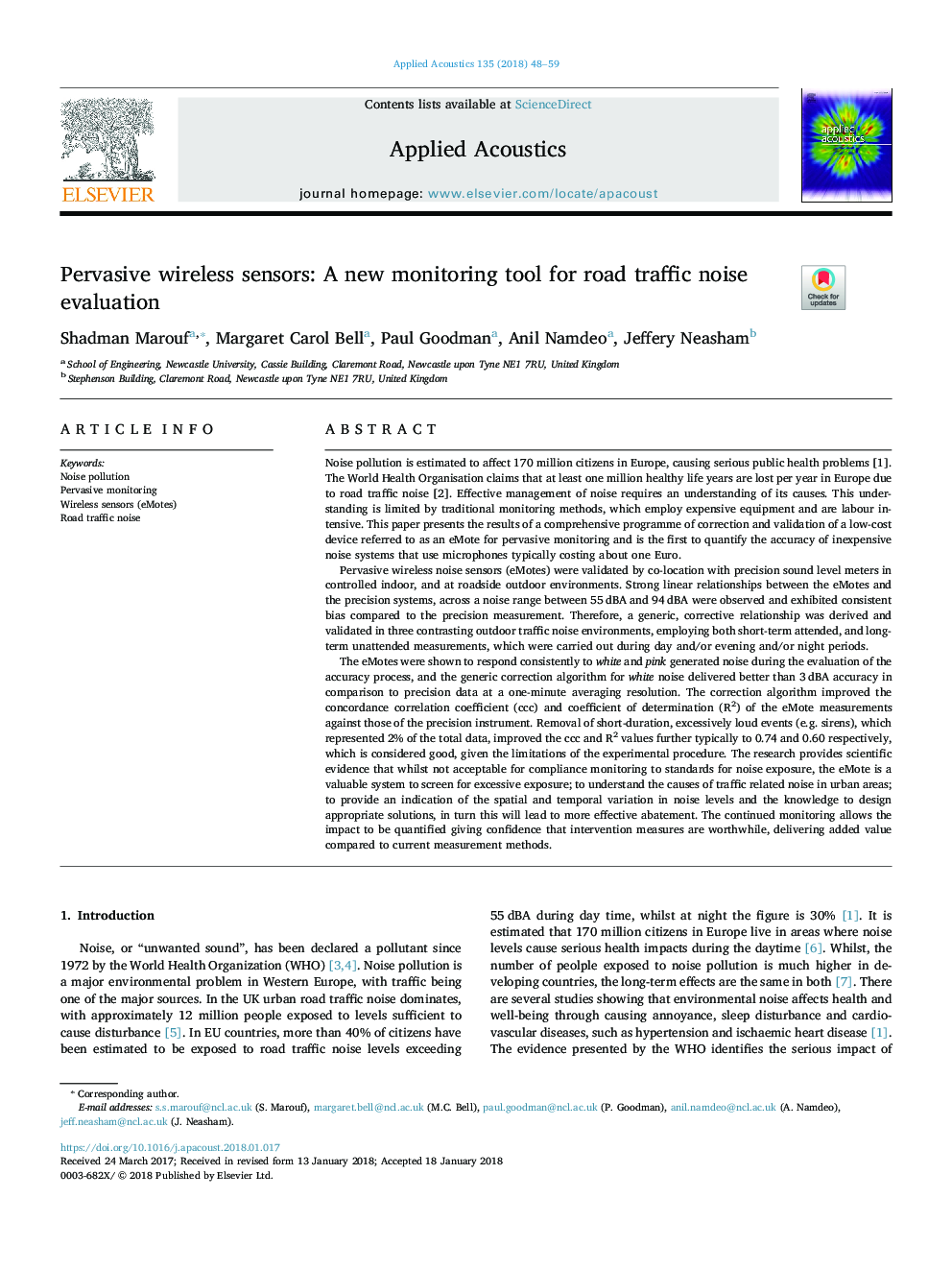| Article ID | Journal | Published Year | Pages | File Type |
|---|---|---|---|---|
| 7152258 | Applied Acoustics | 2018 | 12 Pages |
Abstract
The eMotes were shown to respond consistently to white and pink generated noise during the evaluation of the accuracy process, and the generic correction algorithm for white noise delivered better than 3â¯dBA accuracy in comparison to precision data at a one-minute averaging resolution. The correction algorithm improved the concordance correlation coefficient (ccc) and coefficient of determination (R2) of the eMote measurements against those of the precision instrument. Removal of short-duration, excessively loud events (e.g. sirens), which represented 2% of the total data, improved the ccc and R2 values further typically to 0.74 and 0.60 respectively, which is considered good, given the limitations of the experimental procedure. The research provides scientific evidence that whilst not acceptable for compliance monitoring to standards for noise exposure, the eMote is a valuable system to screen for excessive exposure; to understand the causes of traffic related noise in urban areas; to provide an indication of the spatial and temporal variation in noise levels and the knowledge to design appropriate solutions, in turn this will lead to more effective abatement. The continued monitoring allows the impact to be quantified giving confidence that intervention measures are worthwhile, delivering added value compared to current measurement methods.
Keywords
Related Topics
Physical Sciences and Engineering
Engineering
Mechanical Engineering
Authors
Shadman Marouf, Margaret Carol Bell, Paul Goodman, Anil Namdeo, Jeffery Neasham,
